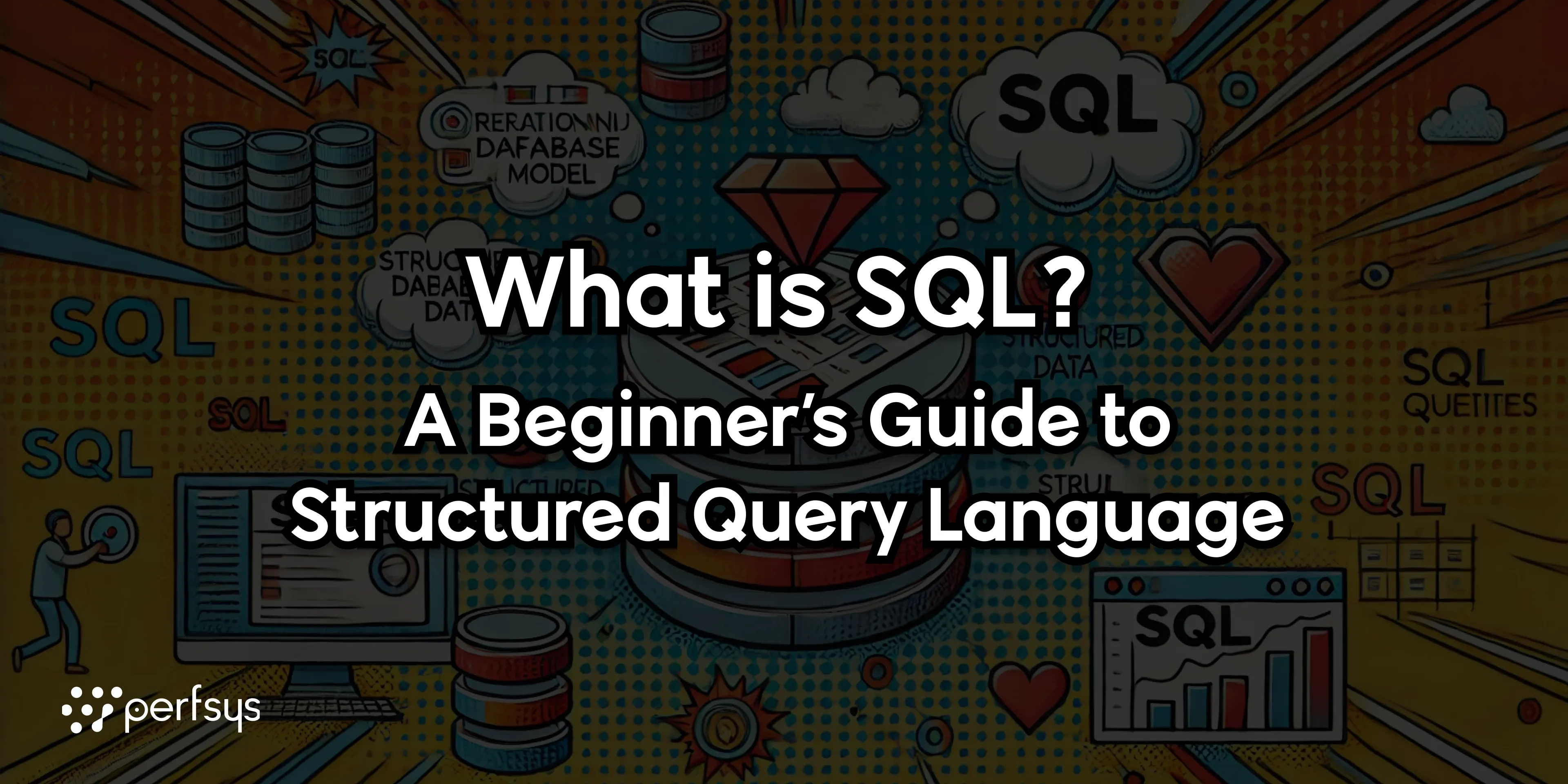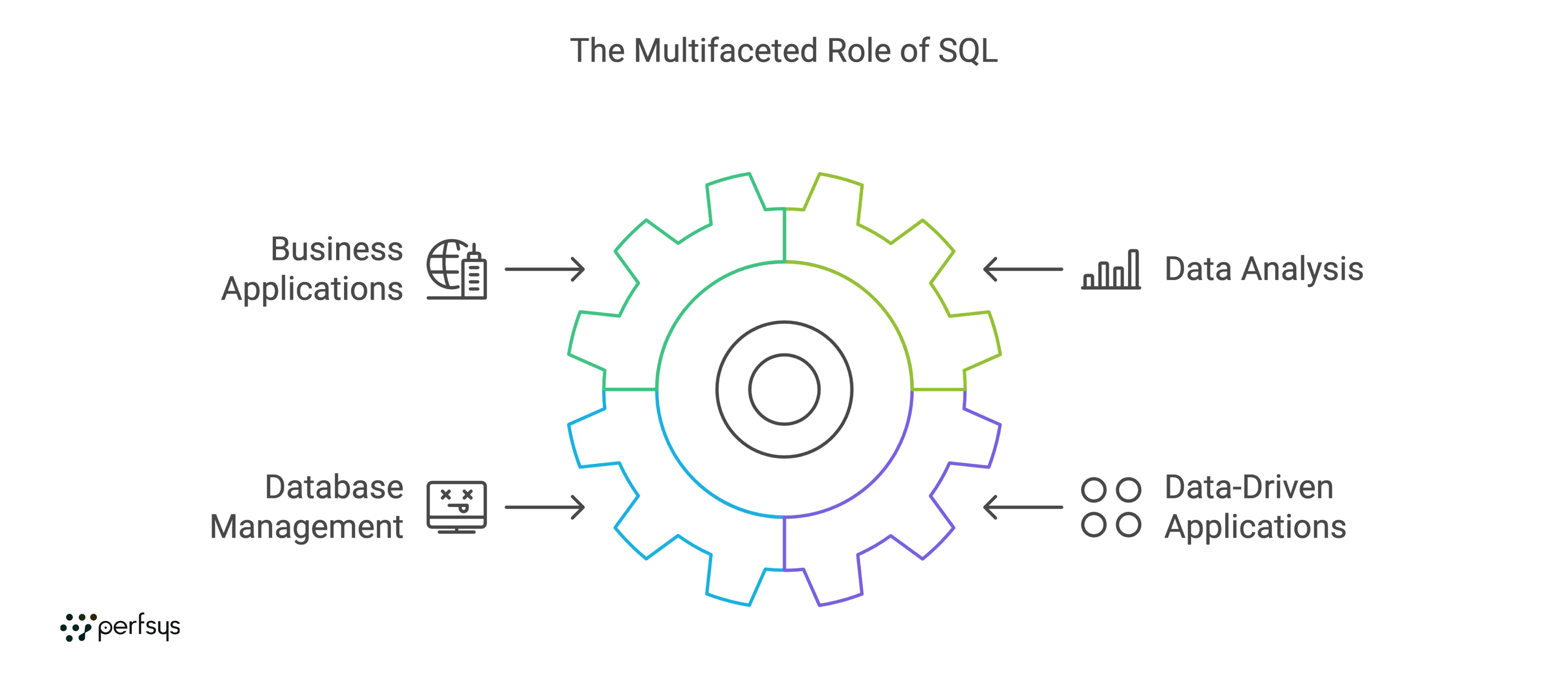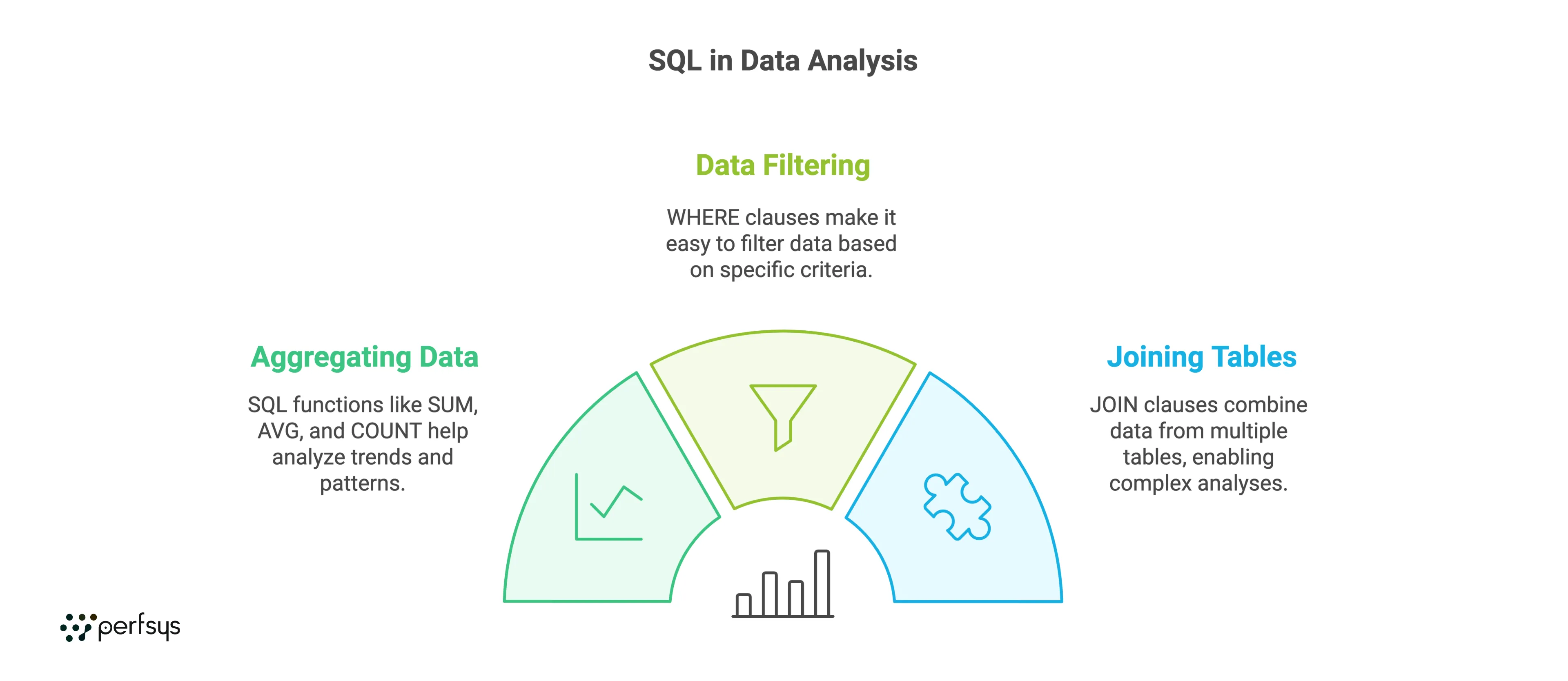What is SQL? A Beginner’s Guide to Structured Query Language

SQL (pronounced “ess-cue-ell” or “sequel”) stands for Structured Query Language. It’s a programming language specifically designed for managing and manipulating data in relational databases. SQL allows you to retrieve, update, insert, and delete data stored in database tables, making it essential for working with data in business, development, and data science.
In this guide, we’ll explain what SQL is, how it works, and why it’s so important in today’s data-driven world.
What is SQL?
SQL is the standard language used to communicate with relational databases, which store data in a structured format using tables. SQL commands enable you to:
-
— Query data (retrieve information)
-
— Insert data (add new entries)
-
— Update data (modify existing entries)
-
— Delete data (remove entries)
Relational databases organize data into tables consisting of rows and columns, where each row is a record, and each column represents an attribute (or field) of that data. SQL enables you to interact with these tables and perform actions like filtering, sorting, and aggregating data.
How Does SQL Work?
SQL works by using queries (commands) to interact with a database. When you run a SQL command, the database management system (DBMS) interprets the command and performs the specified action. For example, if you write a query to select data from a table, the DBMS retrieves and displays the requested data.
Example of a simple SQL query:
SELECT name, age FROM employees WHERE department = 'Sales';This query retrieves the names and ages of employees who work in the Sales department from the “employees” table.
Common SQL Commands
SQL commands can be grouped into different categories based on their function:
1. Data Query Language (DQL)
- — SELECT: Used to retrieve data from a database.
SELECT * FROM employees;2. Data Manipulation Language (DML)
- — INSERT: Adds new data to a table.
INSERT INTO employees (name, age, department) VALUES ('Alice', 30, 'HR');- — UPDATE: Modifies existing data in a table.
UPDATE employees SET age = 31 WHERE name = 'Alice';- — DELETE: Removes data from a table.
DELETE FROM employees WHERE name = 'Alice';3. Data Definition Language (DDL)
- — CREATE: Creates a new database or table.
CREATE TABLE employees (id INT, name VARCHAR(50), age INT, department VARCHAR(50));- — ALTER: Modifies an existing database or table.
ALTER TABLE employees ADD salary DECIMAL(10, 2);- — DROP: Deletes a database or table.
DROP TABLE employees;4. Data Control Language (DCL)
- — GRANT and REVOKE: Control access to data by granting or revoking permissions to users.
Why is SQL Important?
SQL is essential for anyone working with data because it’s the primary way to access, manage, and analyze data in relational databases. Here’s why SQL is so valuable:
Widely Used in Business
SQL is used in finance, marketing, and operations to manage customer data, analyze sales, and make informed decisions.
Data Analysis and Reporting
SQL is commonly used to pull data for analysis, helping companies understand trends, generate reports, and track performance.
Database Management
SQL allows database administrators (DBAs) to manage data structure, ensure data security, and maintain efficient database systems.
Backbone of Data-Driven Applications
Many applications, such as e-commerce sites, content management systems, and online booking platforms, use SQL to manage user data and transactions.

Relational Databases that Use SQL
SQL is the standard language for relational databases, so it’s compatible with most of them, including:
-
— MySQL: Widely used open-source relational database.
-
— PostgreSQL: Advanced open-source database with a strong reputation for reliability.
-
— Oracle Database: Popular in enterprise environments for high-volume, complex data management.
-
— Microsoft SQL Server: A widely used relational database system in corporate environments.
-
— SQLite: Lightweight, file-based database commonly used in mobile applications.
Real-Life Examples of SQL in Action
1. Customer Data Management
A retail company can use SQL to pull customer purchase history, helping them understand buying behavior and create targeted promotions.
2. Financial Reporting
SQL is used in finance to track income, expenses, and financial performance over time, making it easier to generate quarterly or annual reports.
3. Inventory Tracking
In supply chain management, SQL is used to monitor stock levels, track products, and manage inventory across multiple locations.
4. Employee Database
HR departments use SQL to manage employee information, calculate payroll, and analyze workforce data.
SQL in Data Analysis
SQL is an essential tool for data analysis, as it allows users to filter, aggregate, and join data across multiple tables. Some of the advanced features that make SQL popular in data analysis include:
-
— Aggregating Data: SQL functions like SUM, AVG, and COUNT help analyze trends and patterns.
-
— Data Filtering: WHERE clauses make it easy to filter data based on specific criteria.
-
— Joining Tables: JOIN clauses combine data from multiple tables, enabling complex analyses.

Example of a SQL Query for Data Analysis:
SELECT department, AVG(salary) AS average_salary
FROM employees
GROUP BY department
HAVING AVG(salary) > 50000;This query calculates the average salary for each department and displays only those departments where the average salary is above $50,000.
Frequently Asked Questions (FAQ)
1. Do I need to be a programmer to learn SQL?
No, SQL is relatively easy to learn, and you don’t need extensive programming experience. It’s commonly used by data analysts, marketers, and business professionals.
2. Is SQL the same for all databases?
SQL is a standard language, but each database system has some unique features or syntax. However, the basics are similar across MySQL, PostgreSQL, Oracle, and other relational databases.
3. Can SQL handle big data?
Traditional SQL is designed for structured data in relational databases. However, many modern data platforms support SQL-like languages to handle large datasets.
4. Is SQL still relevant?
Yes, SQL is widely used and remains essential for managing relational databases, making it a valuable skill in data-driven roles.
Conclusion
SQL (Structured Query Language) is a powerful tool for managing, analyzing, and interacting with data in relational databases. It’s the go-to language for retrieving and organizing data, making it an essential skill for anyone working in data-related fields.
Whether you’re building applications, managing customer data, or analyzing sales trends, SQL makes it easy to work with large datasets and derive meaningful insights. Ready to get started? Learning SQL opens up a world of possibilities in today’s data-centric world.
